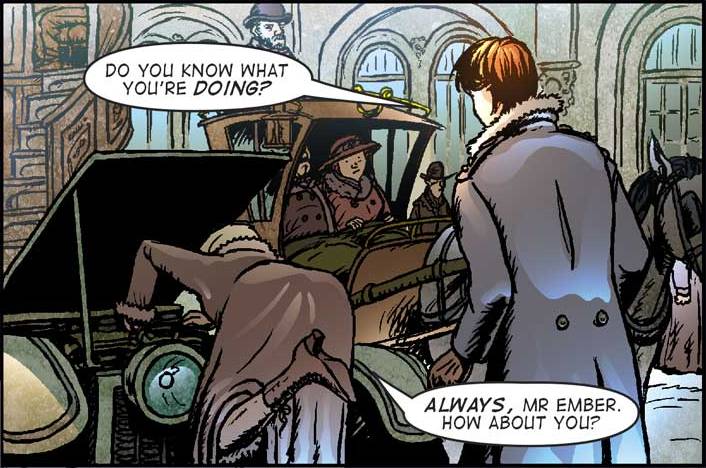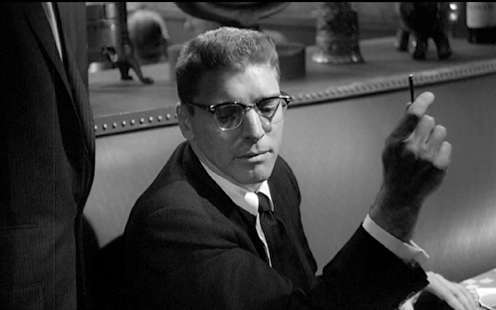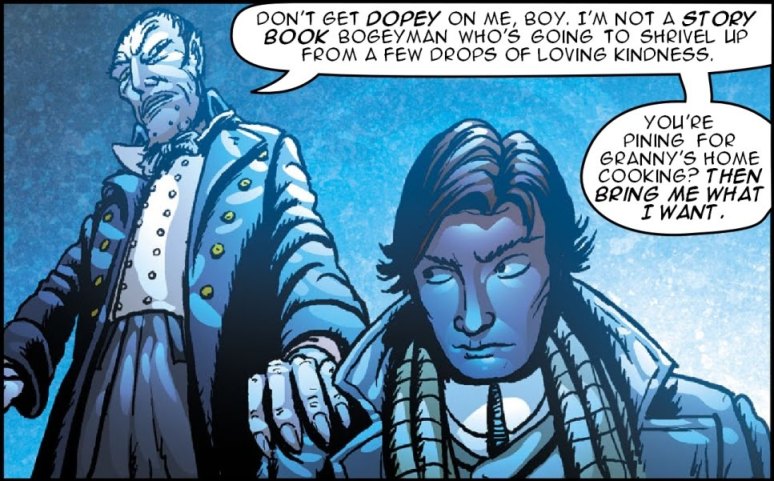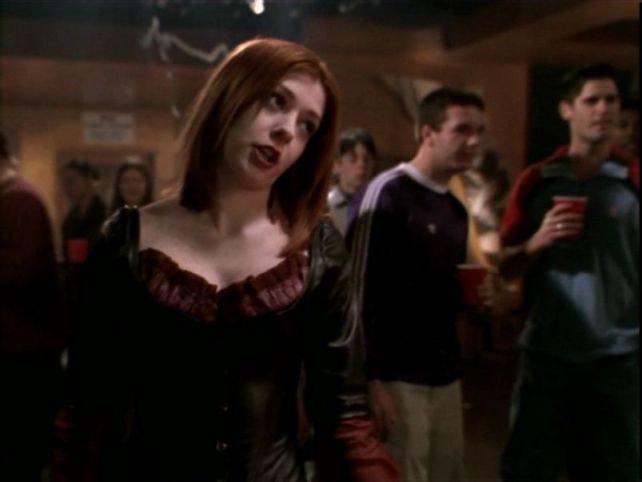Yakety Yak: dialogue in comics
It’s fine to have talk scenes in comics, as long as talk isn’t all the scene achieves. Mirabilis is intended to be quite a solid read with plenty of characterful dialogue, but even so this is a visual medium and you really don’t want it all to grind to a halt while two characters natter at each other – that is, if they are doing nothing but natter to each other.
In a movie you can have characters walking while they talk. The changing background scenery creates visual interest. You can work in some little visual details to counterpoint the conversation as one of them buys a newspaper or stops to light a cigarette. You can even cut from one location to another while keeping the conversation running as if it’s continuous.
In a comic it’s not so easy, because there it’s much more obvious that you’ve just got a bunch of two-shots from various angles and distances. The medium demands more visual variety than a movie, and then it can just end up looking desperately busy: the direct overhead shot, the over-the-shoulder, and so on.
You can spice it up with a secondary narrative thread. Two characters are talking and there’s a knock at the door, and one guy answers it and gets a parcel from the FedEx guy, and they’re still talking all the while (not about the parcel) as he unwraps it, and then if the parcel contains something that ironically reflects the last line of dialogue you have an almost classic comic sequence.
For instance, say it’s one guy’s birthday and he ends whatever it is he was talking about with the line, ‘I’m not going be jerked around anymore.’ And he unwraps this parcel and it turns out to be a puppet. Cut to the next scene and readers will think you’re Alan Moore.
That example is just a stylistic flourish, though; nothing more. It has dramatic irony, which is entertaining, but it’d be much better if the secondary narrative thread illustrates something about the characters that isn’t being said in the dialogue.
In ‘The Wrong Side of Bedlam’ (Mirabilis #2) I had Jack talking to Estelle, and a lot of what they are saying is exposition. They get to her car and the chauffeur says it’s broken down and Jack is saying, ‘Newfangled contraptions, eh? I’ll get you a cab.’ And Estelle says, ‘Nonsense,’ flips up the hood and fixes it – to Jack’s astonishment. So that was good because it not only covered the expository stuff in the dialogue, it told us something about Estelle (she’s independent, modern and good with machines) and more importantly it moved their relationship on, because Jack is left feeling like he’s made a fool of himself so next time they meet he’s got the baggage of this scene to deal with.

- Evokes the feeling of being there (setting, weather, time of day, etc)
- Reveals character (facts about somebody and/or aspects of their personality)
- Advances the plot
- Develops or changes relationships and/or emotions
- Contains the theme of the story (though not usually overtly!)
- Entertains the reader (ie is imaginative, interesting, intriguing, exciting – or just funny)
‘Hi how are you I’m fine,’ was how the late Blake Snyder characterized bad dialogue. ‘Engaging characters talk differently than you and I,’ he wrote in Save the Cat. ‘They have a way of saying things, even the most mundane things, which raises them above the norm.’
So, writers must find ways to say familiar things in an interesting way. That applies to all prose, naturally, not just dialogue. When it works, you get lines whose poetry lets you see even a commonplace scene with fresh eyes. Buffy the Vampire Slayer ran seven seasons – call it 110 hours – throughout much of which we were watching friends arguing or making up (or making out). Everyday stuff. Yet in the hands of skilled writers like Joss Whedon, Jane Espenson, Drew Goddard, Marti Noxon and others, it was never boring. Buffy always had a new way to say ‘I love you’, ‘I hate you’ and ‘I’m gonna dust you.’
But there are pitfalls. In the search to find a new spin on an old line, you can stray off into the realm of the downright peculiar. There was a movie (whose name I have mercifully forgotten) in which the heroine said, ‘Somebody is trying make me dead’ instead of the plain old ‘Somebody is trying to kill me’. Trouble is, that doesn’t sound like great dialogue, it just sounds like English isn’t the character’s first language. You should never let fear of a cliché drive you to gobbledygook.

‘Match me, Sidney.’ That’s the great Clifford Odets with three words comprising one of the most famous lines in cinema. But a simple little bit of dialogue like that can’t work without an actor to deliver it. The line wouldn’t have the same impact on the page of a comic as when it’s spoken with chilling egomania by Burt Lancaster. So try this classic Odets writing:
SIDNEY: Way up high, Sam, where it’s always balmy. Where no one snaps his fingers and says, ‘Hey, shrimp, rack the balls!’ Or, ‘Hey, mouse, mouse, go out and buy me a pack of butts.’ I don’t want tips from the kitty. I’m in the big game with the big players. My experience I can give you in a nutshell, and I didn’t dream it in a dream either: dog eat dog. In brief, from now on, the best of everything is good enough for me.
Nobody talks like that. Of course they don’t. But where ‘He wants to make me dead’ stinks with the triumph of sweaty desperation over sweet talent, Odets’s dialogue comes from truth. It tells us everything about Sidney’s resentments, his fears and what he thinks he needs. And, most importantly, it sings.
Dialogue speaks first to the emotions, then to the intellect. As Desdemona says: ‘I understand a fury in your words. But not the words.’
When a character states something in logical terms, that’s something the reader can argue with. You can disagree, and then you’ve disconnected from the story. An emotional appeal, on the other hand, is hard to pin down, so it’s less likely to break the spell. It seduces you.
For example, in Gangs of New York, Amsterdam (Leonardo DiCaprio) has this voiceover line the first time Bill the Butcher leads his men to the Dead Rabbits’ house:
When oblique writing is done with honesty like that, nothing works better. The writer (Jay Cocks) is using a poetic phrase to sum up almost everything we’ve experienced in the movie to this point.
It has to come from the heart, though. Listen to the fake-poetic voiceover in Grey’s Anatomy, or the gosh-shucks homilies of A River Runs Through It. There it sounds like the vagueness is just covering up the fact that the writer has space to fill and nothing to say.
Those are the set-piece talk scenes. The big epiphanic moments of voiceover. But of course there needs to be a little lacing of poetry in even the commonplace dialogue:
Not: ‘We’re in the middle of the ocean.’
Instead: ‘Look around, pal. Planning on growing fins?’
Not: ‘I like fruit.’
Instead: ‘I can never resist a juicy black plum.’

Howard Hawks said: ‘Hemingway calls it oblique dialogue. I call it three-cushion. Because you hit it over here and over here and go over here to get the meaning. You don’t state it right out.’
But, before you decide how to have a character say something, you need to stop and think whether they need to open their mouth at all. In a moving visual medium, dialogue is the last storytelling tool you reach for. Hitchcock’s test was to watch a movie with the sound off and see if he could still follow the story. In a comic, you’re not going to get the nuance that an actor can bring with just an expression or a gesture, but you do still have a very mobile viewpoint so you don’t need to use as many words of dialogue as in a novel.
Dialogue doesn’t have to do any work that the images are doing already. Suppose our hero is talking to a wild-eyed guy who’s setting a clock strapped to a makeshift contraption. There’s no need for dialogue like: ‘Once you activate the timer, this bomb will go off in seven minutes.’ We can already see that it’s a bomb, and we know what timers are used for. Instead the hero gingerly picks up the device:
BOMB MAKER: Plenty of time. Smoke a cigarette. Fill out your tax return. Make your weekly phone call to Mom. Just don’t start War and Peace.
Good dialogue serves more than one purpose. The bomb maker is telling the hero he won’t have much time once the bomb is primed. That’s the surface meaning. But notice that every example he gives is a reminder of mortality: cigarettes, taxes, family. Then he caps it with ironic emphasis, because starting a war is exactly what the hero is going to do.
And then later, if you want the tension that comes with a ticking clock, why not insert a countdown in captions from the moment the bomb is activated? Because, you know, if the bomb maker had answered, ‘Seven minutes’ that wouldn’t have meant anything anyway. With a countdown you get immediacy.
Dialogue like the bomb maker’s is said to be overdetermined. On a subliminal level the best dialogue bombards the audience with a whole bunch of associations and resonances designed to grab their full attention:
‘He says there’s a storm coming.’
‘I know.’
Or how about one of the most effective dialogue exchanges ever written:
‘Do you expect me to talk?’
‘No, Mr Bond, I expect you to die.’
That’s superb writing because it takes us (and Bond) by surprise and explodes an emotional charge that powers the rest of the scene. Whereas look at something like this:
‘You can’t just let them die. It’s inhuman!’
‘Who ever said I was… human?’
That dialogue is so boring because almost all of us are more interested in character than we are in information. And that applies even when the information concerns the deaths of millions of people. On the surface, that’s just a statistic. It takes storytelling to make sense of it on a human level.

Penultimate word on this subject from Mr Blake Snyder: ‘Dialogue is your opportunity to reveal character and tell us who this person is as much as what he is saying. How someone talks is character and can highlight all manner of that character’s past, inner demons and outlook on life.’
And, to prove that point, the final word goes to Ms Willow Rosenberg, as written by Jane Espenson:
‘It’s a doodle. I do doodle. You, too. You do doodle, too.’

